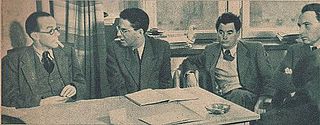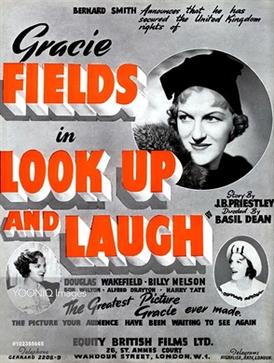Related Research Articles

John Grierson was a pioneering Scottish documentary maker, often considered the father of British and Canadian documentary film. In 1926, Grierson coined the term "documentary" in a review of Robert J. Flaherty's Moana.

The Sinhalese people, also known as the Sinhalese are an Indo-Aryan ethno-linguistic group of island Sri Lanka. Historically, they were also known as the Helas or the Lion People. They are the largest ethnic group in Sri Lanka, constituting about 75% of the Sri Lankan population and number more than 15.2 million.

Anagārika Dharmapāla was a Sri Lankan Buddhist revivalist and a writer.
The culture of Myanmar (Burma) has been heavily influenced by Buddhism. Burmese culture has also been influenced by its neighbours.
The GPO Film Unit was a subdivision of the UK General Post Office. The unit was established in 1933, taking on responsibilities of the Empire Marketing Board Film Unit. Headed by John Grierson, it was set up to produce sponsored documentary films mainly related to the activities of the GPO.

Follow the Fleet is a 1936 American RKO musical comedy film with a nautical theme starring Fred Astaire and Ginger Rogers in their fifth collaboration as dance partners. It also features Randolph Scott, Harriet Hilliard, and Astrid Allwyn, with music and lyrics by Irving Berlin. Lucille Ball and Betty Grable also appear, in supporting roles. The film was directed by Mark Sandrich with script by Allan Scott and Dwight Taylor based on the 1922 play Shore Leave by Hubert Osborne.

The Sri Lankan independence movement was a peaceful political movement which was aimed at achieving independence and self-rule for the country of Sri Lanka, then British Ceylon, from the British Empire. The switch of powers was generally known as peaceful transfer of power from the British administration to Ceylon representatives, a phrase that implies considerable continuity with a colonial era that lasted 400 years. It was initiated around the turn of the 20th century and led mostly by the educated middle class. It succeeded when, on 4 February 1948, Ceylon was granted independence as the Dominion of Ceylon. Dominion status within the British Commonwealth was retained for the next 24 years until 22 May 1972 when it became a republic and was renamed the Republic of Sri Lanka.

Tenavaram temple is a historic Hindu temple complex situated in the port town Tenavaram, Tevanthurai, Matara) near Galle, Southern Province, Sri Lanka. Its primary deity was a Hindu god Tenavarai Nayanar (Upulvan) and at its zenith was one of the most celebrated Hindu temple complexes of the island, containing eight major kovil shrines to a thousand deity statues of stone and bronze and two major shrines to Vishnu and Shiva. Administration and maintenance was conducted by residing Hindu Tamil merchants during Tenavaram's time as a popular pilgrimage destination and famed emporium employing over five hundred devadasis.

Night Mail is a 1936 British documentary film directed and produced by Harry Watt and Basil Wright, and produced by the General Post Office (GPO) Film Unit. The 24-minute film documents the nightly postal train operated by the London, Midland and Scottish Railway (LMS) from London to Scotland and the staff who operate it. Narrated by John Grierson and Stuart Legg, the film ends with a "verse commentary" written by W. H. Auden to a score composed by Benjamin Britten. The locomotive featured in the film is LMS Royal Scot Class 6115 Scots Guardsman.
The origins of the Sri Lankan Civil War lie in the continuous political rancor between the majority Sinhalese and the minority Sri Lankan Tamils. According to Jonathan Spencer, a social anthropologist from the School of Social and Political Studies of the University of Edinburgh, the war is an outcome of how modern ethnic identities have been made and re-made since the colonial period, with the political struggle between minority Tamils and the Sinhalese-dominant government accompanied by rhetorical wars over archeological sites and place name etymologies, and the political use of the national past.
Kayts, is one of the important small island off the coast of the Jaffna Peninsula in northern Sri Lanka. There are a number of other villages within the Kayts Island such as Allaippiddi, Mankumpan, Velanai, Saravanai, Puliyankoodal, Suruvil, Naranthanai, Karampon and Melinchimunai.

Sri Lankan place name etymology is characterized by the linguistic and ethnic diversity of the island of Sri Lanka through the ages and the position of the country in the centre of ancient and medieval sea trade routes. While typical Sri Lankan placenames of Sinhalese origin vastly dominate, toponyms which stem from Tamil, Dutch, English, Portuguese and Arabic also exist. In the past, the many composite or hybrid place names and the juxtaposition of Sinhala and Tamil placenames reflected the coexistence of people of both language groups. Today, however, toponyms and their etymologies are a source of heated political debate in the country as part of the political struggles between the majority Sinhalese and minority Sri Lankan Tamils.

Knight Without Armour is a 1937 British historical drama film starring Marlene Dietrich and Robert Donat. It was directed by Jacques Feyder and produced by Alexander Korda from a screenplay by Lajos Bíró adapted by Frances Marion from the 1933 novel by James Hilton. The novel was published in the United States as Without Armour. The music score was by Miklós Rózsa, his first for a motion picture, using additional music by Tchaikovsky.

Richard Francis Gombrich is a British Indologist and scholar of Sanskrit, Pāli, and Buddhist studies. He was the Boden Professor of Sanskrit at the University of Oxford from 1976 to 2004. He is currently Founder-President of the Oxford Centre for Buddhist Studies. He is a past president of the Pali Text Society (1994–2002) and general editor emeritus of the Clay Sanskrit Library.

Basil Charles Wright was a documentary filmmaker, film historian, film critic and teacher.
John Elston Taylor was a British documentary filmmaker.

Look Up and Laugh is a 1935 British comedy film directed by Basil Dean and starring Gracie Fields, Alfred Drayton and Douglas Wakefield. The film is notable for featuring an appearance by Vivien Leigh in an early supporting role.

Lionel George Henricus Wendt was a pianist, photographer, filmmaker and critic from Sri Lanka. He was the leader of ‘43 Group, a collective of Sri Lankan artists.
Bibiladeniye Mahanama Thero is a Buddhist monk of the Theravada Order. The thero is the only Buddhist priest in Asia of the Theravada order to actively engage in the experimentation and the creative exploration of music as a form of aesthetic expression. The thero has been actively engaged with the art, both on overseas projects as well as in Sri Lanka for nearly two decades.
The 1915 Sinhalese-Muslim riots was a widespread and prolonged ethnic riot in the island of Ceylon between Sinhalese Buddhists and the Ceylon Moors. The riots were eventually suppressed by the British colonial authorities.
References
- ↑ Greene, Graham (4 October 1935). "Song of Ceylon". The Spectator . (reprinted in: Taylor, John Russell, ed. (1980). The Pleasure Dome . p. 25. ISBN 0192812866.)